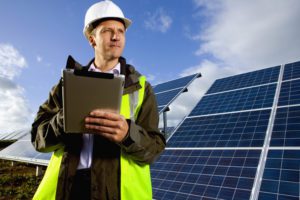Every company has a vested interest in ensuring its data center is energy efficient, given the cost of wasted energy. Consider that a 1 MW high-availability data center can ring up an electric bill of $20 million over its lifetime. If you can wring a few percentage points of efficiency out, you’re saving big money.
Part of the challenge in accurately measuring data center electrical efficiency is dealing with all the variables that come into play. These include the effect of the IT load, the outdoor conditions, and user configurations and settings for equipment.
IT load
One of the most important conditions that change over time is the IT load.
Generally speaking, efficiency increases dramatically as the load increases, which makes sense; a data center that carries a light load will still be using plenty of electricity for heating and cooling, but getting little IT benefit from it.
Of course data center loads change over the course of time, even from hour to hour. Power management features in newer generation IT equipment can cause the IT load to vary moment-to-moment, while the removal and addition of IT equipment by the data center operator causes longer term changes in the IT load. So you need more than a simple snapshot in time to determine your data center load; you need to consider the average load over a period of time. Given that many data center devices cycle on and off every few minutes, the shortest averaging time that gives meaningful information is approximately one hour.
Outdoor conditions
Outdoor conditions are another factor that vary with time and affect data center efficiency. While factors such as sunlight, humidity, and wind speed can affect efficiency, the most important variable is the outdoor temperature. As the temperature increases, CRAC units have to work harder to keep up with the additional heat load. Units that have economizer modes help improve efficiency, especially at lower temperatures.
User configuration and settings
Users can take a variety of actions to affect energy efficiency, including changing temperature or humidity set points, moving or adding vented floor tiles, and failing to clean air filters. These effects are highly variable and depend on the exact design of the power and cooling systems. When you make such changes, you’re really changing the data center design – which means you now have to take new energy efficiency measurements.
Combined effect of varying conditions
All of these elements combine to create potentially dramatic swings in data center power consumption and efficiency. While the day-to-day variation may not be dramatic, it seriously degrades the usefulness of a specific, one-time measurement of PUE. Even if the measurement is highly accurate, it won’t be very useful in predicting electrical bills, measuring the effect of efficiency improvement activities, and performing trend analysis.
Fortunately, there is a way to use measurements to achieve all of these objectives: mathematical models that accept variables such as IT load and outdoor weather as inputs and deliver expected efficiency values at various load levels. To learn more about the models, check out this related post, or download the APC by Schneider Electric white paper, “Electrical Efficiency Measurement for Data Centers.”

